25 Fun Facts About Japan That You Need To Know
1. Japan is home to more than 6,800 islands.
When thinking about fun facts about Japan, the archipelago’s vast number of islands is truly fascinating. This fact highlights the diverse and extensive nature of Japan’s geography.
Spanning from the cold, northern islands near Russia to the tropical, southern islands near Taiwan, Japan offers a variety of climates and landscapes. Each island has its unique culture, making the country a mosaic of traditions and natural beauty.
2. Japan has a rabbit island.
Okunoshima Island, known as Rabbit Island, is a small island in Japan famous for its large population of friendly wild rabbits. This island offers a unique experience for visitors and animal lovers.
The rabbits are descendants of a few released pets, and now they roam freely, welcoming tourists. This island highlights Japan’s love for nature and animals, providing a peaceful retreat from the hustle and bustle of city life.
3. Japan boasts the world’s shortest escalator.
Among the intriguing facts about Japan, the existence of the world’s shortest escalator takes a special place. This tiny escalator is located in the basement of More’s department store in Kawasaki.
With only five steps, it ascends a mere 83.4 cm (32.8 inches). This peculiar feature captures the essence of Japan’s love for innovation and efficiency, even in the smallest details.
4. Japan has a festival dedicated to the phallus.
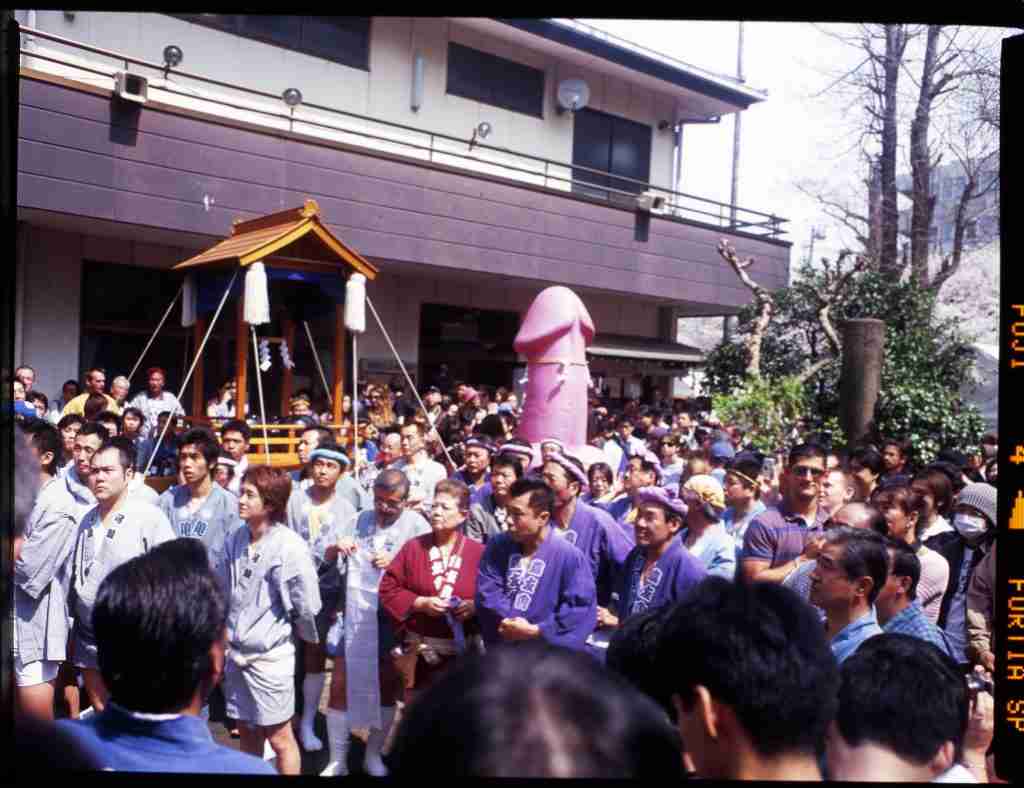
The Kanamara Matsuri, or the Festival of the Steel Phallus, is one of the most unique and surprisingly open-minded traditions you’ll find. This festival celebrates fertility, marriage, and healthy relationships.
Held annually in Kawasaki, the event features parades, decorations, and snacks all shaped like the male genitalia. It’s a vivid example of Japan’s cultural diversity and its approach to celebrating aspects of human life that are often seen as taboo elsewhere.
5. Vending machines in Japan sell everything from eggs to cars.
Japan’s vending machines are a testament to the country’s innovative spirit and convenience culture. These machines offer an astonishing variety of goods, making them an integral part of daily life in Japan.
From hot meals and fresh produce to clothing and even vehicles, there’s virtually nothing you can’t find in a Japanese vending machine. This convenience is unmatched and reflects the Japanese commitment to efficiency and service.
6. What makes Japan food unique?
Japanese cuisine, known as Washoku, emphasizes seasonal ingredients, presentation, and balance.
It’s famous for dishes like sushi, ramen, and tempura, and is recognized by UNESCO as an Intangible Cultural Heritage, highlighting its global significance and cultural value.
7. There are more pets than children in Japan.
In an intriguing twist, Japan has more pets than children. This shift reflects changing societal values and preferences towards companionship and family structures.
The increasing number of pets is also a reflection of Japan’s aging population and the younger generation’s penchant for pet ownership over traditional family models. Pets in Japan enjoy a high level of care and are often treated as family members.
8. Japan’s trains are among the most punctual in the world.
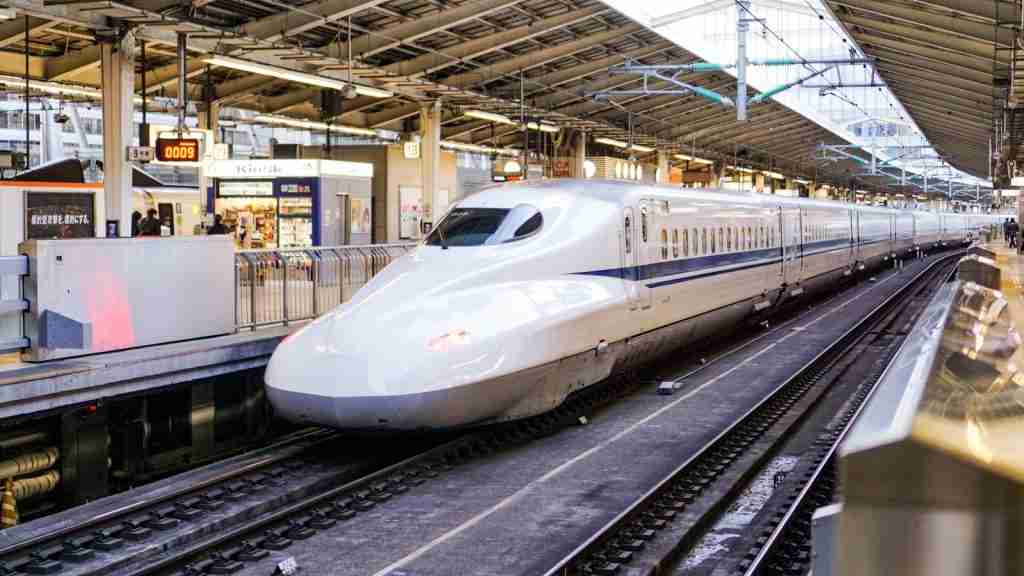
The punctuality of Japanese trains is legendary, with most trains arriving on time to the minute. This reliability is a source of national pride and a hallmark of Japan’s efficiency.
Train delays, when they happen, are so rare and brief that passengers often receive delay certificates for their employers. This level of service and punctuality greatly enhances the public transport experience in Japan.
9. Japan has a unique way of numbering buildings.
Japan’s system of numbering buildings is based on the order in which they were built, rather than their location on the street. This can make navigating an adventure in itself.
The system reflects Japan’s deep-rooted respect for history and tradition, even in the layout of its cities. While it may be confusing for visitors, it adds to the charm and distinctiveness of Japanese urban landscapes.
10. The Japanese language has thousands of onomatopoeia.
Japan’s language is rich in onomatopoeia, with thousands of sounds words that mimic the sounds they describe. This linguistic feature adds a vividness and expressiveness to the Japanese language.
From the rustling of leaves (sarasara) to the sound of rain (pitter-patter), Japanese onomatopoeia enhances the language’s ability to evoke sensory experiences, making it unique among the world’s languages.
11. Japan has the oldest company in the world.
Japan is home to the world’s oldest continuously operating company. This fact underscores Japan’s ability to balance tradition with innovation.
The company, Kongo Gumi, established in 578 AD, specializes in temple construction and has survived for over 1,400 years. This longevity is a testament to the enduring values of dedication and craftsmanship in Japanese culture.
12. Square watermelons are grown for easier storage.
Square watermelons in Japan are not just a novelty but a practical solution to storage issues. These uniquely shaped fruits are easier to stack and store, showcasing Japan’s innovative approach to problem-solving.
Grown in boxes to achieve their shape, these watermelons are often more expensive than their round counterparts. They symbolize Japan’s dedication to efficiency and space-saving techniques, even in agriculture.
13. Sleeping on the job in Japan can be seen as a sign of hard work.
In Japan, sleeping on the job, known as “inemuri,” is not necessarily frowned upon. Instead, it can indicate hard work and dedication to one’s job.
This cultural norm reflects the intense work ethic in Japan, where long hours and commitment are highly valued. It’s a fascinating aspect of Japanese work culture that contrasts sharply with perceptions in many other countries.
14. A cafe in Tokyo employs robots controlled by people with disabilities.
Japan’s commitment to inclusivity and technology merges beautifully in a Tokyo cafe, where robots are controlled by people with disabilities. This initiative provides employment opportunities and highlights Japan’s progressive approach to technology and social inclusion.
The robots serve as the arms and legs of their operators, allowing them to interact with the world in new ways. This is not just a testament to Japanese innovation but also to its compassionate and inclusive society.
15. What is the structure of Japan’s government?
Japan operates under a parliamentary government with a constitutional monarchy.
The Emperor is the symbol of the state but holds no governing power, while the Prime Minister and the elected Diet have political authority. Japan’s government is known for its stability and efficiency in administration.
16. Tokyo is the largest metropolitan area in the world.
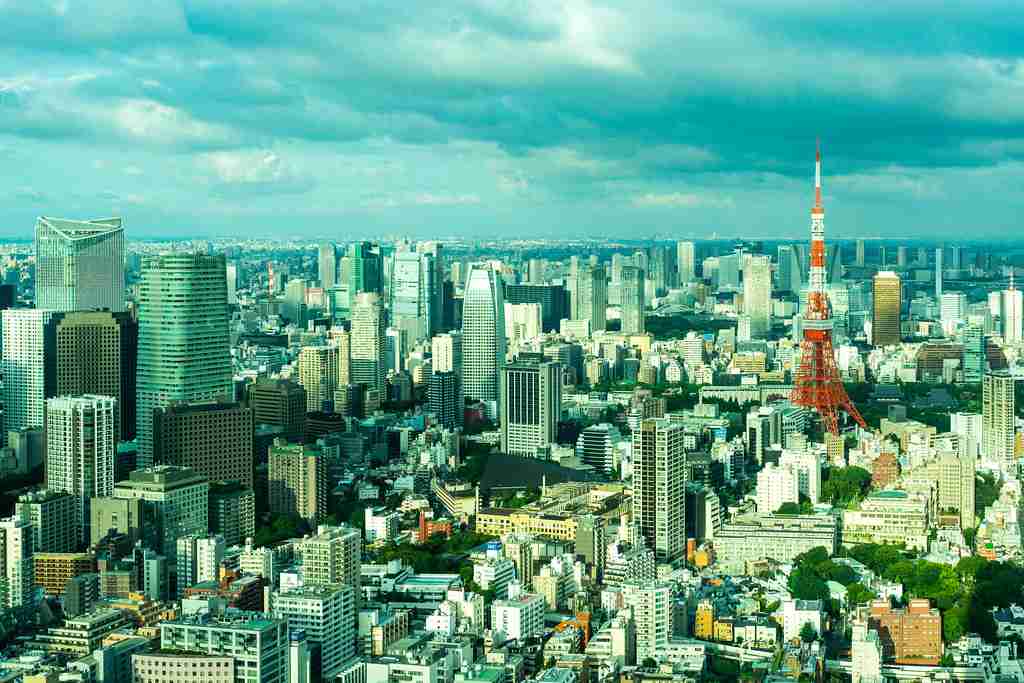
Among the many Japan facts, Tokyo’s status as the world’s largest metropolitan area stands out. It’s a testament to Japan’s urban development and the city’s global significance.
With over 37 million residents, Tokyo is a bustling hub of technology, culture, and innovation. The city perfectly blends the traditional with the modern, making it a fascinating destination for travelers.
17. Japan has a national holiday dedicated to appreciating mountains.
Yama no Hi, or Mountain Day, is a testament to Japan’s deep reverence for nature. Celebrated annually on August 11, this national holiday encourages people to explore and appreciate the country’s mountainous landscapes.
This day reflects the integral role that mountains play in Japanese culture, spirituality, and recreation. It’s a beautiful example of how Japan fun facts can illuminate the country’s profound connection to its natural environment.
18. The concept of “forest bathing” originated in Japan.
Shinrin-yoku, or forest bathing, is a Japanese practice that involves immersing oneself in the forest atmosphere. It’s a cornerstone of preventive health care and healing in Japanese medicine.
This practice emphasizes the therapeutic power of nature, promoting physical and mental health benefits. It showcases Japan’s holistic approach to well-being, deeply rooted in its cultural appreciation for nature.
19. Japanese trains have women-only cars.
In response to concerns about safety and overcrowding, many Japanese commuter trains feature women-only cars during rush hours. This initiative showcases Japan’s proactive measures to ensure the comfort and security of its commuters.
Introduced as a way to prevent groping and harassment, these cars are a reflection of Japan’s ongoing efforts to create a respectful and safe public transport environment for everyone.
20. The Japanese art of repairing broken pottery with gold is called kintsugi.
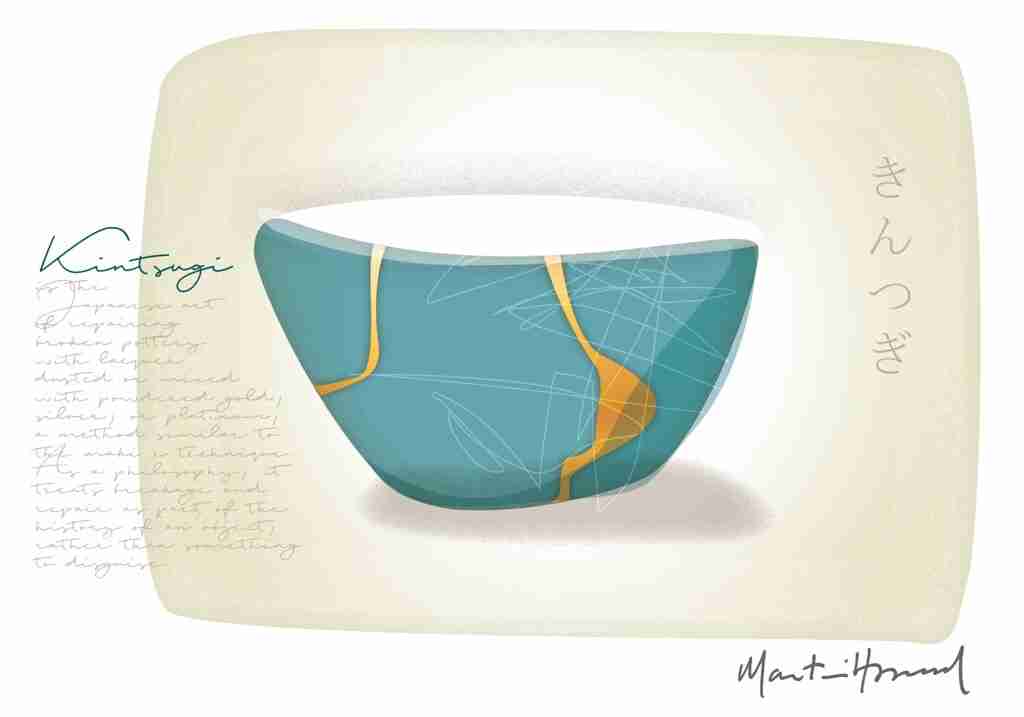
Kintsugi is a beautiful representation of Japanese aesthetics and philosophy. This art form involves repairing broken pottery with lacquer mixed with gold, silver, or platinum.
More than just a repair technique, kintsugi symbolizes the acceptance of flaws and the beauty in imperfection. It reflects a deeper appreciation for the history and resilience of objects, embodying the Japanese ethos of respect and reverence.
21. How did the 2011 tsunami impact Japan?
The 2011 tsunami, triggered by a 9.0 magnitude earthquake, caused widespread devastation in northeastern Japan, leading to thousands of deaths and triggering the Fukushima nuclear disaster.
It prompted global support and a reevaluation of Japan’s disaster preparedness and energy policies.
22. Japan’s literacy rate is among the highest in the world.
With a literacy rate surpassing 99%, Japan stands as a global leader in education. This achievement is a testament to the country’s commitment to education and the value placed on literacy.
Such high literacy rates contribute to Japan’s innovative economy and societal well-being, highlighting the country’s dedication to fostering knowledge and learning.
23. Japan has more than 3,000 McDonald’s restaurants.
Japan’s appetite for fast food is exemplified by its more than 3,000 McDonald’s restaurants. This makes it the country with the highest number of McDonald’s outlets in Asia.
The presence of these restaurants speaks to the global influence on Japanese eating habits and the successful integration of Western culture into Japanese daily life, while still maintaining its unique culinary traditions.
24. The annual Sapporo Snow Festival showcases giant ice sculptures.
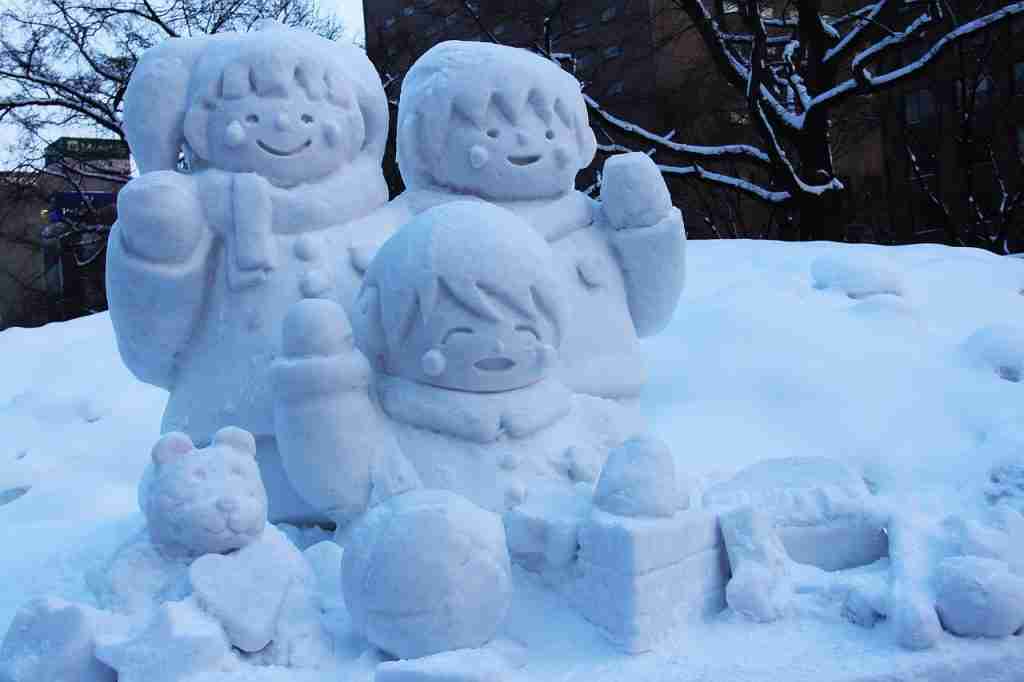
The Sapporo Snow Festival is one of Japan’s most famous winter events, attracting millions of visitors each year. Gigantic ice sculptures transform the city into a winter wonderland, showcasing the skill and creativity of artists.
This festival highlights the beauty of winter in Japan and the communal spirit of celebration. This reveals the country’s rich culture and its people’s capacity for joy and artistic expression.
25. Japan has blue traffic lights in some areas.
In a unique twist on road safety, some areas in Japan use blue lights instead of green for “go” signals. This decision is rooted in the Japanese language, which traditionally used the same word for blue and green.
This fascinating detail not only highlights the uniqueness of Japanese culture but also its innovative approach to blending tradition with modernity. It’s a quirky yet functional aspect of daily life in Japan, illustrating the country’s unique character.
FAQs
Japanese cuisine is diverse and renowned for its fresh ingredients, meticulous preparation, and artistic presentation. It includes sushi, sashimi, tempura, ramen, udon, and a wide variety of seasonal dishes like sushi rolls and bento boxes.
Kanji refers to the logographic characters used in the Japanese writing system, originating from Chinese characters. Each kanji character represents a specific concept, object, or idea, and mastering kanji is essential for reading and writing in Japanese.
Traditional Japanese clothing includes the kimono, a full-length robe with wide sleeves and a wraparound design often worn for special occasions, and the yukata, a lighter and more casual cotton kimono worn in summer and at festivals.
Japanese culture is multifaceted, blending ancient traditions with modern influences. It values harmony, respect, and discipline, as seen in practices like tea ceremonies, flower arranging (ikebana), martial arts (such as karate and judo), and the art of bonsai.
The Japanese language is an East Asian language spoken by over 125 million people, primarily in Japan. It features three writing systems: kanji (logographic characters), hiragana, and katakana (syllabic scripts), and is known for its honorifics and complex grammar structure.







